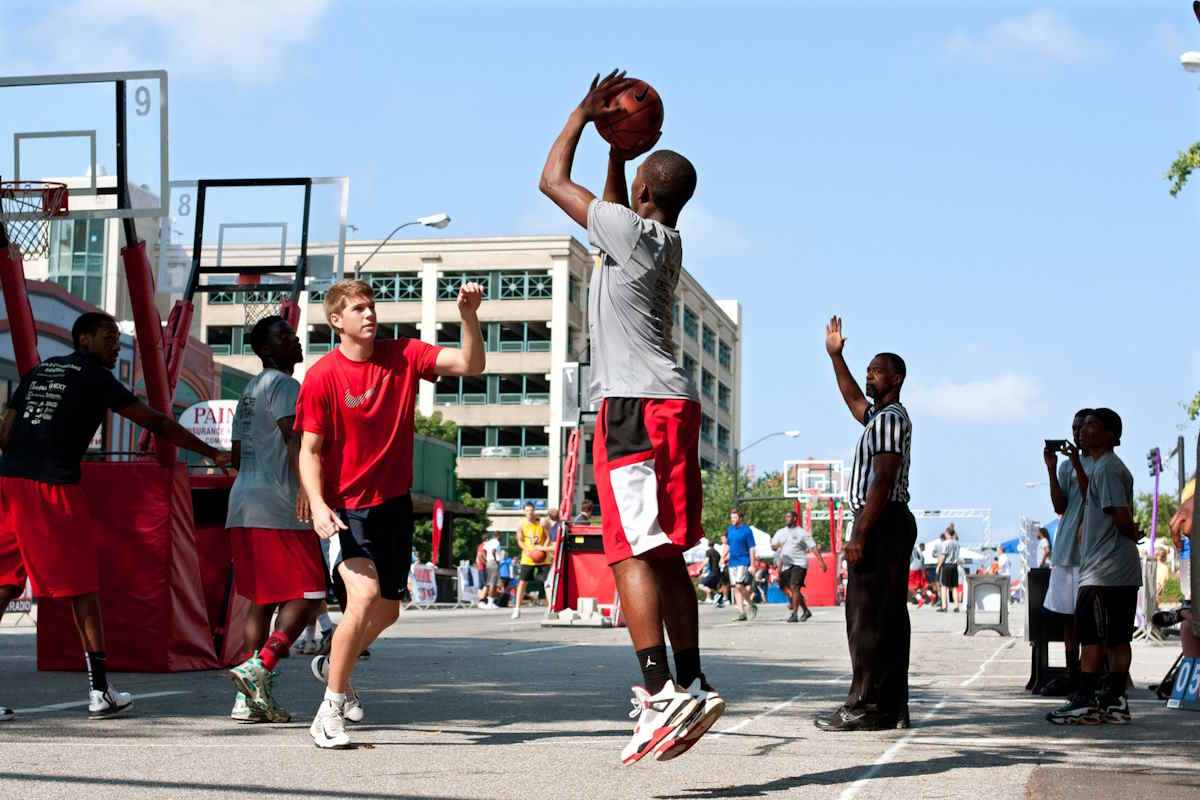In the world of sports, few disciplines have a history as rich and fascinating as basketball. Invented by Dr. James Naismith in 1891, basketball revolutionized the sporting world with its unique blend of strategy, skill, and fast-paced action. While the sport has evolved over the years, its fundamental rules remain anchored in the 13 original rules set by Naismith. These rules laid the foundation for what is today one of the most popular sports worldwide.
13 Simple Rules: The Creation of Basketball
Basketball was born from the imagination of James Naismith, a Canadian who worked as a physical education instructor at the YMCA International College in Springfield, Massachusetts. Faced with the challenge of creating a new game to maintain his students’ interest during winter, Naismith designed a sport that emphasized skill and teamwork rather than brute force – and a sport that could be played indoors.
Here are the 13 rules established by Naismith in 1891:
- The ball can be thrown in any direction with one or both hands.
- Players can hit the ball except with their fist (which constitutes a foul).
- A player cannot run with the ball; they must throw it from the spot where they catch it, except if they are stopping.
- The ball must be held in the hands, not with arms or body.
- Any form of aggression towards an opponent is prohibited. Violations result in consequences ranging from a foul to exclusion.
- Hitting the ball with a fist is a foul, as per rules 2 and 5.
- Three consecutive fouls by a team give a basket to the opponent.
- A basket is valid when the ball remains in it without opponent intervention. If opponents move the basket to prevent the ball from entering, the basket is awarded to the team that sent the ball.
- When the ball goes out, the first to touch it puts it back in play. Delay or attempt to gain time results in a foul.
- The assistant referee notes fouls and can disqualify players.
- The head referee judges the ball, elapsed time, and awards baskets.
- A game lasts 30 minutes, divided into two 15-minute halves with a 5-minute break.
- The team with the most baskets wins. In case of a tie, overtime is possible until the next basket.
A Ball and a Court: Simple Foundations
According to Naismith’s original rules, the ball used in the game had to be spherical and could be hit in any direction with one or both hands. The court was a rectangular space divided into three equal parts, with a basket or target placed at each end.
9 Players per Team!
On the basketball court, each team consisted of nine players, and the game began with a ball toss between two players at the center of the court. According to Naismith’s rules, the player who succeeded in putting the ball in the opponent’s basket won a point for their team.
Fouls & Sanctions
In Naismith’s original game, a foul was called when a player hit the ball with their fist, committed a rule violation, or displayed unsportsmanlike conduct. When a foul occurred, the game was stopped, and the ball was given to the opposing team. If a foul was committed by a player who had the ball, the ball was given to the opponent regardless of where they were on the court.
Two 15-Minute Halves
The game was officiated by a referee whose role was to call fouls and supervise the game. Playing time was defined by two 15-minute halves, with a five-minute break between them. This became the basic structure of modern basketball.
Today, basketball games are divided into four 10-minute quarters, except in the NBA where quarters last 12 minutes.
Basketball has come a long way since its humble beginnings in a Massachusetts gymnasium. Today, it is a global sport, with professional leagues like the NBA captivating millions of fans worldwide. However, despite all the changes and evolution, the heart of the game remains anchored in Naismith’s 13 original rules.
The Impact of the 13 Original Rules on Modern Basketball
The original rules of basketball, though simplified, laid the groundwork for the game as we know it today. These thirteen rules were designed to promote teamwork and emphasize skill, strategy, and precision rather than brute physical force.
In the first basketball game played at Springfield College, the fundamental principles of Naismith’s rules were highlighted. Players had to work as a team to move the ball toward the opponent’s basket, using their skill and strategy rather than their strength. The rules prohibited running with the ball, hitting it with a fist, and making brutal physical contact.
These prohibitions encouraged passing, shooting, and teamwork, which remain at the heart of modern basketball.
Modern Basketball: Stricter Rules for More Spectacle
Basketball, like many other sports, has undergone evolution over the decades. These changes were initiated to improve the spectacle, balance competition, and increase game dynamics. Let’s look at some of these major evolutions that shape modern basketball.
- The 24-Second Rule: Established to increase game pace, this rule requires the offensive team to attempt a basket within 24 seconds of gaining possession. This rule prevents a team from monopolizing the ball indefinitely and promotes more offensive play.
- 5 vs 5: While basketball started with larger teams, the modern standard is to play with five players on each side. This configuration makes the game easier to read and offers more space on the court, thus favoring strategy and individual matchups.
- The 3-Second Rule: A player cannot remain in the opponent’s key for more than three consecutive seconds unless actively trying to play the ball. This prevents congestion under the basket and encourages player movement and rotation.
- Quick Inbound: When a team must put the ball back in play after it goes out, they have only 5 seconds to do so. This rule keeps the game flowing and prevents teams from taking too much time to set up strategies during each inbound.
- 8 Seconds to Cross Half-Court: After recovering the ball in their own half, a team has 8 seconds to move it past the half-court line. This rule prevents teams from delaying the game and increases pressure on the offensive team, favoring aggressive defenses.
These evolutions, among others, show how basketball has sought to adapt and renew itself to offer an increasingly captivating spectacle to its fans. By making the game more dynamic and favoring offense, modern basketball has become an iconic sport in the United States, whose success has spread worldwide. The number of basketball fans is estimated at 2.2 billion people (!), and it is also the second most practiced sport in the world, just behind football.
Basketteur de moins d’1m80, je prends la plume pour parler basket, cyclisme ou football. Je ne crie pas “Go Spurs Go” mais je suis Wemby de près. Et tant pis pour mes Trail Blazers qui végètent à l’Ouest…


